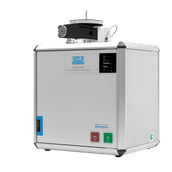DNA molecules engineered to detect pathogens and deliver drugs
First, Cornell researchers created DNA "bar codes" - strands of the genetic material that quickly identify the presence of different molecules by fluorescing. Now, they have created new DNA molecules that can detect pathogens and deliver drugs to cells when they form long chains called polymers.
Cornell researcher Dan Luo and colleagues describe in Nature Nanotechnology that their simple DNA molecules, or monomers, link into polymers under ultraviolet light and in the presence of such pathogens as SARS and HIV.
The research team, which included first author and postdoctoral associate Jong B. Lee and David Muller, associate professor of applied and engineering physics, report that the polymers, made up of thousands of monomers, allow for the fast detection of pathogens. The researchers used asymmetric strands of DNA, characterized by unique sequences at the ends of each branch, which they call zip codes. Each zip code can link to a corresponding sequence, including the DNA of such pathogens as HIV. When the zip codes and pathogens find each other, they form chains that curl up into spheres and are visible under a microscope.
Using the same principle, the researchers also demonstrated attaching multiple nucleic acid-based drugs, along with tracers, to the DNA strands, which were then absorbed by cells.
Luo, associate professor of biological and environmental engineering, explained that such work illustrates how DNA is not only a genetic material, but can be a useful structure to carry drugs or other substances.
"The genetic part is the recognition of the pathogen," he said. "The generic part is making the nanostructure.".
Most read news
Organizations
These products might interest you

CHSN-O, CN and N Elemental Analyzers by Velp Scientifica
State-of-the-art Elemental Analyzers for N, CN and CHSN-O in organic samples
Consistency, ease of use, and premium features for elemental analysis following official standards

HYPERION II by Bruker
FT-IR and IR laser imaging (QCL) microscope for research and development
Analyze macroscopic samples with microscopic resolution (5 µm) in seconds

Get the analytics and lab tech industry in your inbox
By submitting this form you agree that LUMITOS AG will send you the newsletter(s) selected above by email. Your data will not be passed on to third parties. Your data will be stored and processed in accordance with our data protection regulations. LUMITOS may contact you by email for the purpose of advertising or market and opinion surveys. You can revoke your consent at any time without giving reasons to LUMITOS AG, Ernst-Augustin-Str. 2, 12489 Berlin, Germany or by e-mail at revoke@lumitos.com with effect for the future. In addition, each email contains a link to unsubscribe from the corresponding newsletter.























































